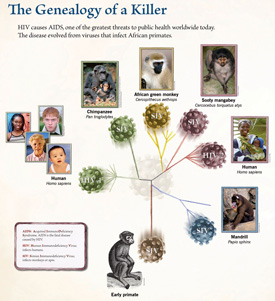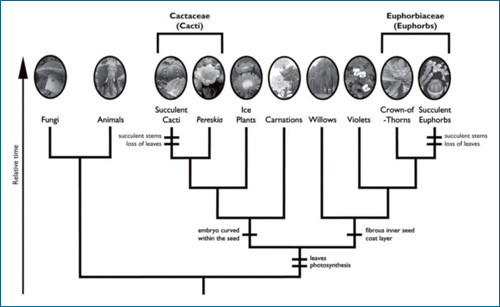
As with any exhibit, early in the design process, it is important to determine exactly what you want visitors to take away from the experience. Specific teaching/learning goals of an exhibit that could benefit from a tree graphic include:
- Conveying specific evolutionary relationships, or more broadly, the idea that all life is related
- Showing that different species share common ancestry
- Showing an unexpected/unusual relationship between one species or group of organisms (i.e., taxon) and another
- Helping to overcome misconceptions about relationships (e.g., about the relationships between birds and other reptiles) or about evolution (e.g., that one modern species evolved from another modern species)
- Highlighting shared traits/characters that provide evidence for common ancestry
- Depicting the evolution of specific traits/characters
- Explaining why particular taxa share or do not share particular traits/characters
- Showing diversity within a taxon
- Teaching how to read and interpret trees
- Showing that knowing evolutionary relationships can help solve problems
- Illustrating a macroevolutionary process (e.g., convergent evolution, diversification, extinction)
- Showing when in geological time particular evolutionary events occurred
- Discussing biodiversity and conservation, especially where extinction is imminent or possible

To refine your learning goals and find out more about what trees can do, you’ll want to review some tree basics:
So do you know what you want your tree or trees to communicate? Now, make sure that your goals for your trees match up with the age and education level of your audience…
